Funny Hats on Guys That Are Wy Too Small
It's no secret that we at the Gentleman's Gazette are big on hats, but they are less commonly seen today than at the beginning 19th century, for instance. So, what happened, what changed, and why did men stop wearing hats? We've got the answers!
When looking at old photographs or watching old movies, you've probably heard people comment on the copious amount of hats worn in them. When discussing previous eras, you've probably heard the often overused phrase that "a man wouldn't leave the house without a hat on." Phrased another way, it's all about the hats.
Why is this? Well, it's one of the clearest visual signifiers that differentiates the so-called "good old days" from today, at least within the context of the lineage of classic menswear. Of course, men today are still wearing suits daily, even if they are becoming less common, but the hat is increasingly rarely worn.
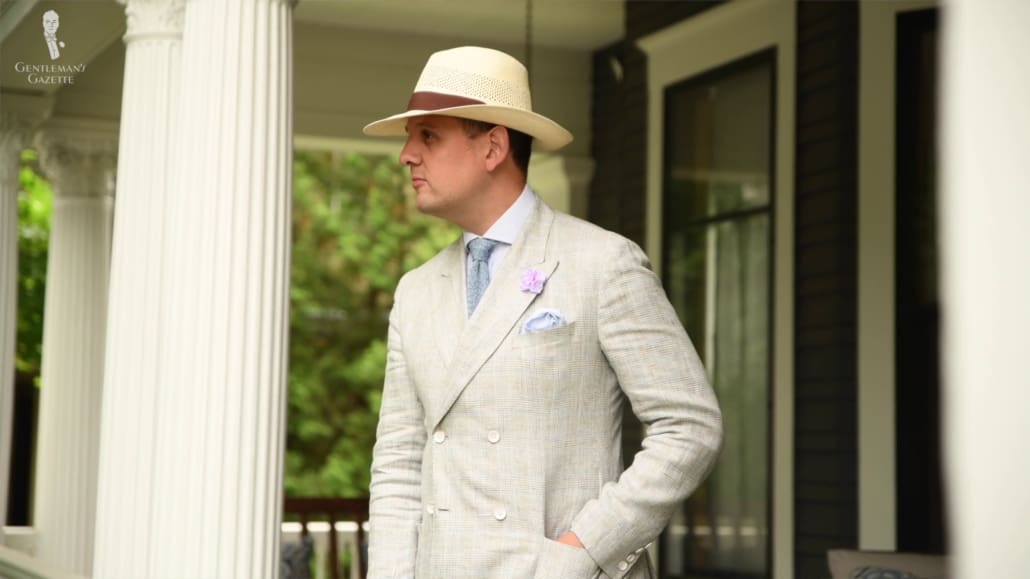
In fact, to turn that overused phrase on its head, most men today leave the house without ever even thinking of putting on a hat.
In the summer months, of course, you may see a baseball cap or two to shield the wearer's eyes from the sun, at least when it's worn in the traditional orientation. Or you may see various types of woolly hats in the winter just to keep the wearer's head warm, but these more utilitarian types of hats aren't necessarily what we're referring to here.

Rather, we're discussing hats of the 19th and 20th centuries, such as the fedora, trilby, homburg, pork pie, straw boater, flat cap, or even the top hat. These were the classic types of headwear that would adorn any man's head when he was out and about for business or leisure.
History of Hats: From Prehistoric Times to the 20th Century
To get to the answers, we'll have to dive into history. Hats have been around since before historical records even began. In fact, the oldest surviving example of prehistoric clothing that we've found includes a hat. Specifically, it's one made of bearskin worn by Ötzi the Iceman. He was discovered in the Alps in 1991, an estimated 5,000 years or so after his death.

Like Ötzi himself, the hat was encased in ice, and once we thawed it out, we found that it was made of various pieces of bearskin that were sewn together. It even had leather thongs or straps that were likely used to hold the hat to the wearer's head. However, these must not have worked too well because Ötzi had clearly lost his hat a little while before he died.
The first thing that humans naturally shield from the elements or falling objects is the head. It makes complete sense then that prehistoric peoples from all over the world are shown to have made hats at some point. In fact, they may even be the oldest known type of garment made by humans. So, as to the question of when hats began, we can't really say for certain.
Cultures from all over the world and throughout history have made hats from all different kinds of materials, including plants, leather, fur, wool, felt, and today, even things like plastic.
In addition to protection, which we also mentioned before, hats have been worn for various reasons, including fashion, showing association, or even showing social status or class. For an iconic example of this, we can look to the late 19th and early 20th century with the clear distinction between the upper classes who wore top hats and the lower classes who wore flat caps.
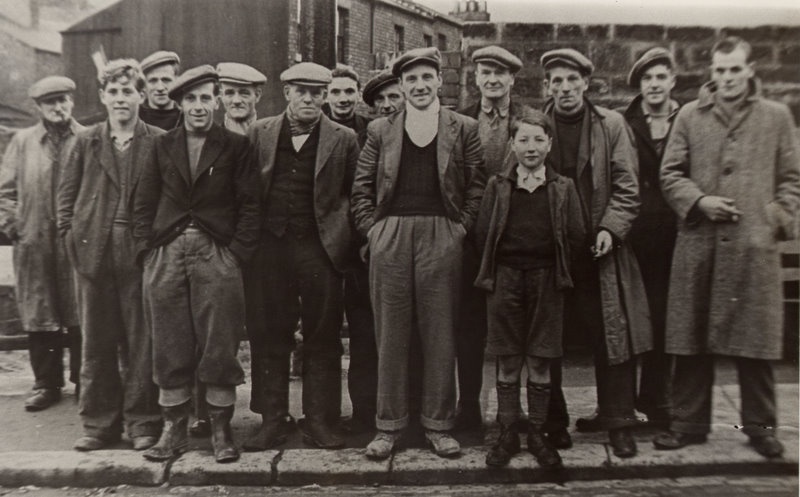
To dive further into some of the various reasons we just mentioned, we can go back a bit further in history. For example, in the Middle Ages, you can see hats like the coif, which were worn for protection, or the chaperon worn for fashion. In the 1600s, the cavaliers famously wore large brimmed hats with big feathers to show allegiance to the king.
In the 1700s, we saw the tricorn hat, which today is commonly associated with pirates, but in that day was actually quite fashionable. The flat brim of previous styles was now pinned up to the crown of the hat, and the large feather was replaced by a bow, perhaps for ease of use when drawing a sword with a sweeping motion.
The closely related bicorn hat was a common feature of military uniforms from the 1790s to the early 1900s. In the late 1700s, beaver felt top hats were invented, and by the 1800s, they were all the rage, and through the 1800s, most of our favorite modern hat styles were born.
The bowler hat came along in the mid-1800s, and the 1880s gave us both the fedora, although it wouldn't become a men's hat until the 1920s, and the German hunting hat known as the Homburg. The Homburg wouldn't hit the world stage until the 1890s, however when King Edward VII wore one on his return from a hunting trip to Germany.
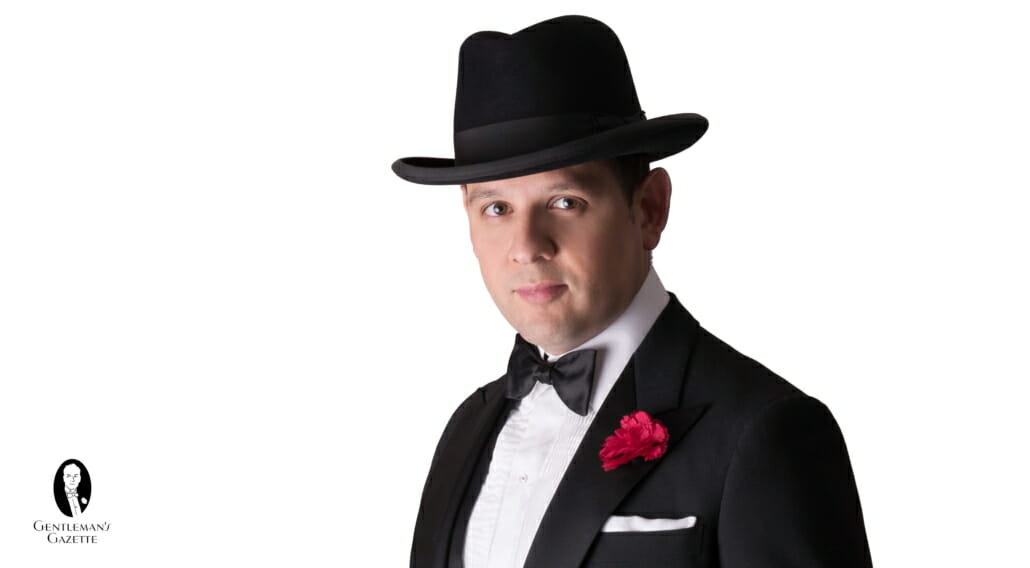
So, by the turn of the 20th century, there were many different hat options available to men. The fedora cemented itself as a predominant option, replacing the top hat, homburg, and bowler to some extent. However, these styles were continually worn as well.
The fedora's popularity was also cemented due to its frequent appearances in movies where stars like Cary Grant and Humphrey Bogart wore it. In the 1950s, musicians like Frank Sinatra and Dean Martin continued to make it popular. Finally, in the 1960s, the closely related trilby hat took over as the most popular hat style for men.
To sum all of this up then, hats have been with us in one form or another basically since forever. So, after the 1960s, what happened?
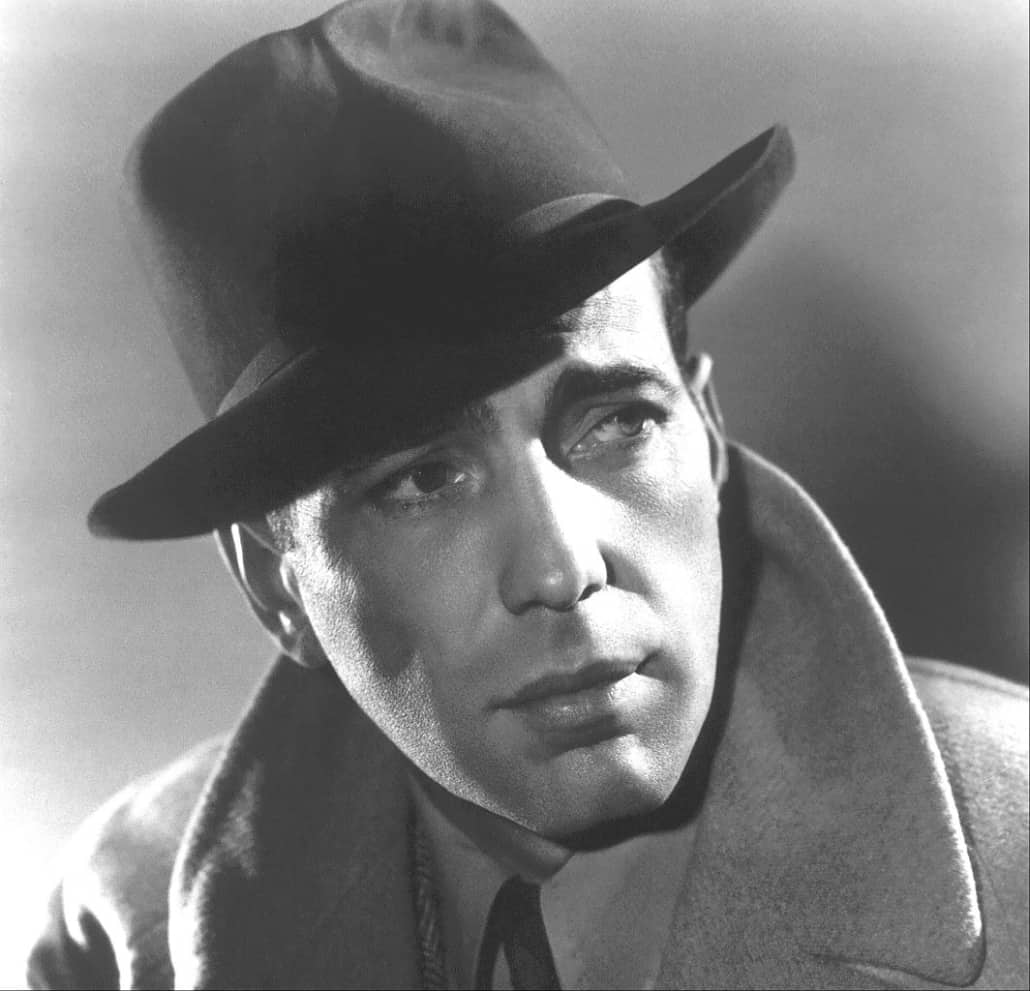
As we mentioned in our guide on how to wear a hat with style and confidence, the decline in hat-wearing is often attributed to President John F. Kennedy going hatless at his inauguration in 1961. But, in fact, this isn't true, and further, JFK actually revived the tradition of wearing a top hat to one's inauguration, which had been dormant for a short time.
So, in other words, no. One man 60 years ago is not solely responsible for the modern man usually leaving his house bare-headed. In fact, there are many socio-cultural reasons why the tradition of hat-wearing declined.
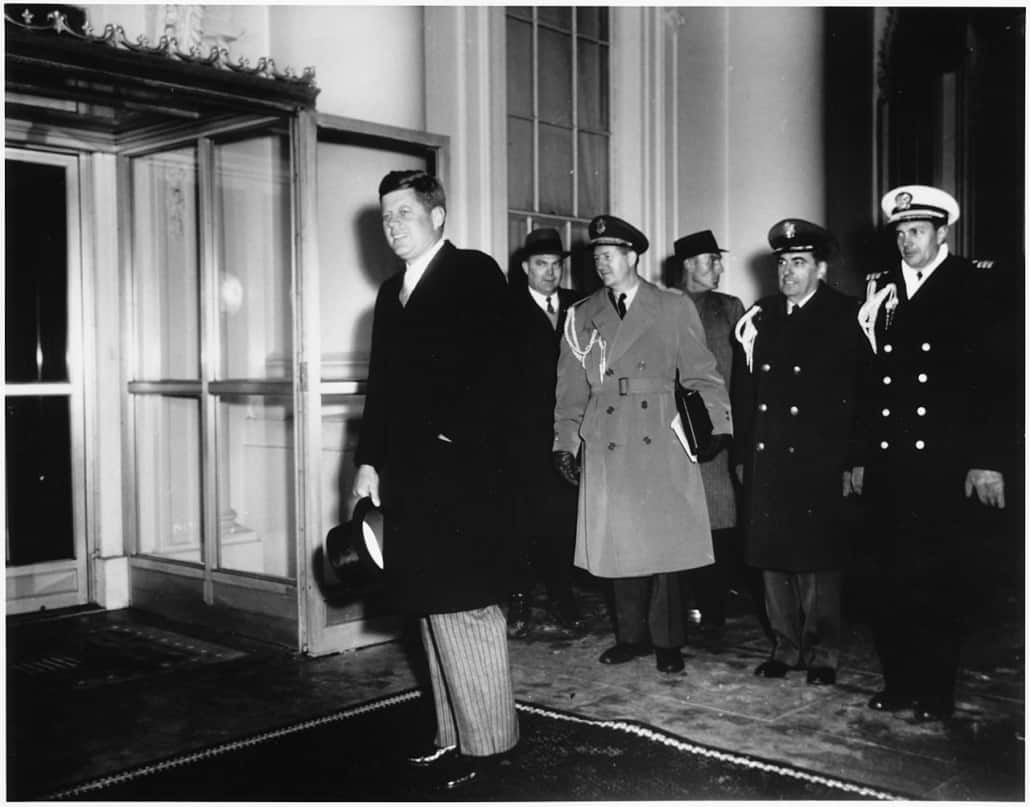
As we also mentioned in that previous guide, one such reason may have been that men returning from the World Wars were sick of wearing helmets or uniform headgear, but this may not be a principal reason either. More significantly then, we think we've got four main reasons why hat-wearing declined.
Why Did Men Stop Wearing Hats? 1. Climate Control
One of the biggest reasons for the loss of hat-wearing is likely that we now have better control over our indoor climate than we used to. This is also why men can now go in and out of doors, sometimes wearing fewer than two layers of clothing, and why things like gloves and scarves aren't as popular as they used to be.
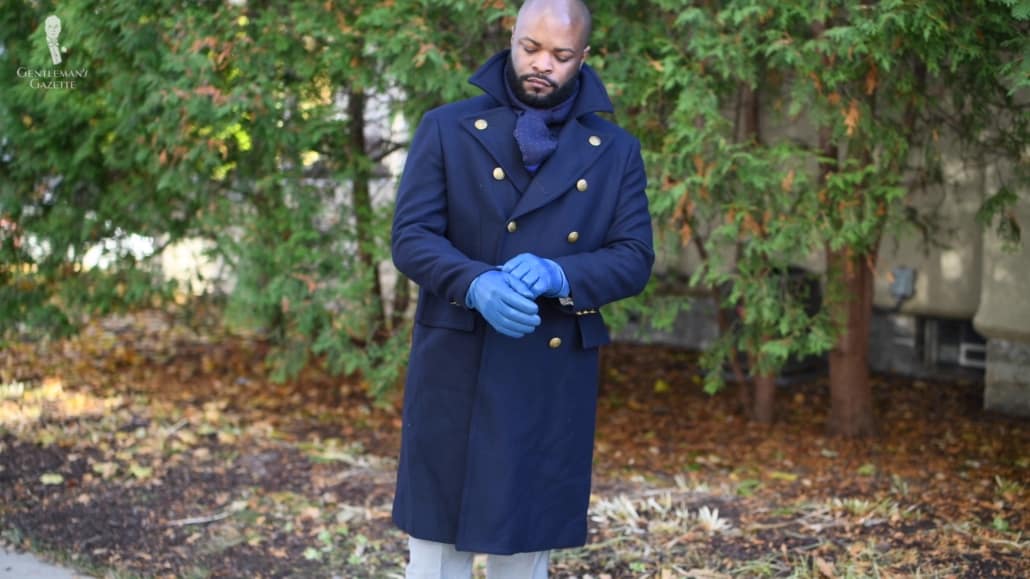
Let's say it's a cold winter's day; leaving your heated office for 20 seconds to get into your heated car, which you'll drive home, and then leave for another 10 seconds to enter your heated house means that you probably aren't going to bother with copious layers like a heavy overcoat, scarf, gloves, and hat. Most men are dressing more or less for room temperature all the time.
Our second reason, which we touched on before, is notions of social class. Before the World Wars, social class was an incredibly important aspect of Western society, and people were absolutely expected to know their place. But, after the horrors of war brought every social class just a bit closer, we began to focus more on the individual rather than on the class in which they resided.

As a result, the practice of wearing clothing, particularly hats, to signify yourself as part of a distinct group has become largely extinct. These days, even the very wealthy are more likely to show off how much money they have by how fast their car is or how expensive their watch is. Or you could take a look at figures like Bill Gates or Steve Jobs, who generally dress just like the rest of us.
3. Prevalence of Highways & Motorcars
Perhaps the biggest of all of these reasons is the increasing prevalence of highway systems and automobiles over the 20th and 21st centuries. So the next time you're on a train in the subway or on a bus or tram, look up and consider how much headroom you have above you.
Depending on your height, when you're standing up, you'll have anywhere between two and three feet of space between the top of your head and the ceiling of the car.
Back when these were the main types of mass transport, tall hats like stovepipes could be worn comfortably, as they wouldn't even come close to touching the ceiling. The same can be said for horse-drawn carriages, which also often offered plenty of headroom.

Meanwhile, though, look up at the ceiling in your own car. How much headroom do you have there? The answer is probably not much, perhaps even for a relatively soft or short hat style. Simply put, modern cars aren't built to accommodate the hat styles of old.
Early automobiles did somewhat accommodate these hat styles either by having open roofs, tall canvases that could be pulled back and opened up or just having taller roof heights in general. Even as early as the 1920s, though, roofs on automobiles got lower.
Remember that the most primitive reason for wearing a hat is to protect your head from the elements or falling objects, but when you're in an enclosed car, you don't need that kind of head protection.
Curiously, special cars with taller roofs were made to accommodate the wearing of top hats. But, these were ultimately historical curiosities that could only be afforded by the very wealthy. So, for everyone else, the invention of motor cars made taller hat styles mostly impractical.
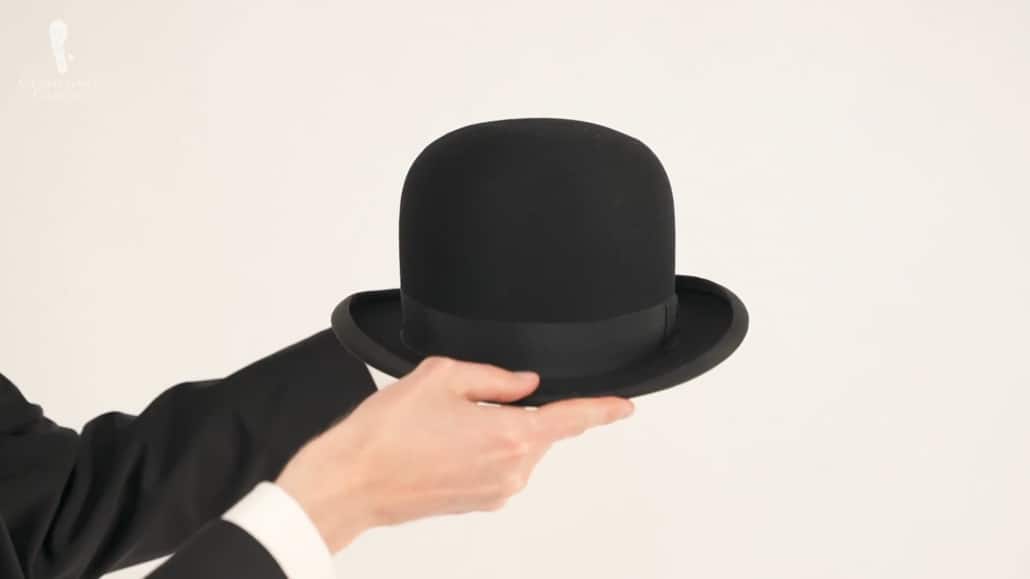
Furthermore, stiffer hat styles like the bowler or Homburg could also be crushed or misshapen by lower ceilings, whereas the fedora and trilby are naturally crushable and can be packed and stored more easily.
Also, as time developed and softer felt hats like the fedora and trilby became more popular, car roofs lowered even further until there was barely any space left at all. For a comparison, consider a car from the 1950s and compare it against a model from the early 1900s. You'll see that there's a drastic difference in the height of the roof.
And around this same time, we also saw the federal-aid highway act of 1956 signed by President Dwight Eisenhower, which saw the construction of a 41,000-mile national system of interstate and defense highways. The construction of safe and convenient highways that crossed the entire country underscored the reality that, by this time, cars had become a way of life.
So, with the advent of highways, there were even more cars and car travel occurring, and fewer people were traveling by train, subway, bus, or tram. So, this got us into a cycle where roofs were low enough that hat-wearing became less prevalent, and because hats were less commonly worn, roof heights could get even lower.
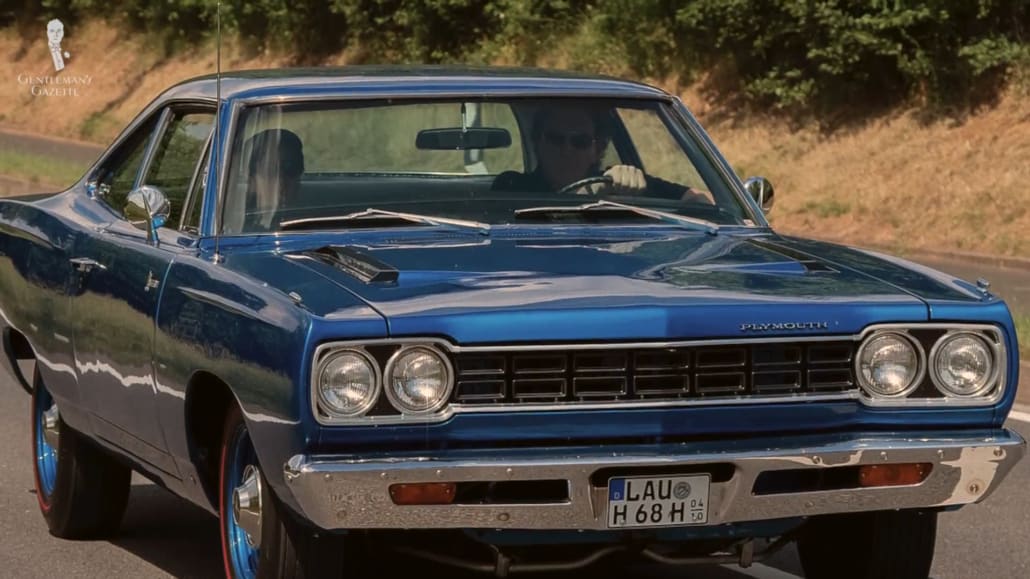
So, with the advent of highways, there were even more cars and car travel occurring, and fewer people were traveling by train, subway, bus, or tram. This got us into a cycle where roofs were low enough that hat-wearing became less prevalent, and because hats were less commonly worn, roof heights could get even lower.
This gets us up to today, where many modern cars have very little room for headwear, and this, to a large extent, puts the nail in the coffin of hat-wearing as a popular cultural element.
4. The Internet (and Meme Culture)
In the last decade and a half or so, hats like the fedora and trilby have gained an increasingly negative reputation thanks to internet memes from websites like 4chan, Reddit, and Tumblr.
Indeed, for some younger members of our audience, when we mention fedoras, they might first think of the infamous "tips fedora" meme. Because there are now thousands of these easily spreadable memes all over the internet, the fedora, in recent years, took on a decidedly less-than-cool reputation.
We'll set aside for a moment the fact that this is actually a trilby hat depicted in most of these memes and sold in retail stores over the last few decades, but that's a minor quibble. You can't trust everything you read on the internet!
Memes like these were used to maliciously bring down people on the internet who were accused of being "try hards" or "white knights." So, now rather than being associated with stylish figures like Humphrey Bogart or Frank Sinatra, younger generations see the fedora and trilby as being more closely associated with awkward "keyboard warriors" or "neckbeards."
Even though we'd like to improve the average man's online behavior a bit if we can, we'd also like to rehab the reputation of these classic hat styles.
A Note on Baseball Caps and Their History
Today, we rarely see most men wearing hats except for the very casual baseball cap. While some menswear enthusiasts would have the knee-jerk reaction of calling the baseball cap ugly or immature, the fact of the matter is that it does have a rich history and, in fact, is older than some of the other traditional styles that we've highlighted before.
The earliest records of baseball caps date all the way back to the 1840s, though they were worn almost exclusively for playing baseball and for keeping the sun out of the player's eyes. They didn't enter the realm of civilian wear until the early 20th century, when baseball fans began wearing them to the stadium to support their favorite team.
Around the 1970s, they were worn by Hollywood actors and celebrities in even more varied social situations, and by the 1980s, they were fully mainstream, at least in America. Then, in the 1990s, hip-hop artists and television shows like The Fresh Prince of Bel-Air popularized the snapback style of the baseball cap.
One factor for the popularity of this hat style is that it is truly the everyman's hat and that it has no inherent class distinction even in its origin, so anyone can wear it.
Conclusion: Where Hats Stand Today
In conclusion, there are many socio-cultural, technological, and economic reasons why modern men often skip wearing a hat. From social class to automobiles to central heating to internet message boards, hats have had a rough go of it over the last 50 years or so.
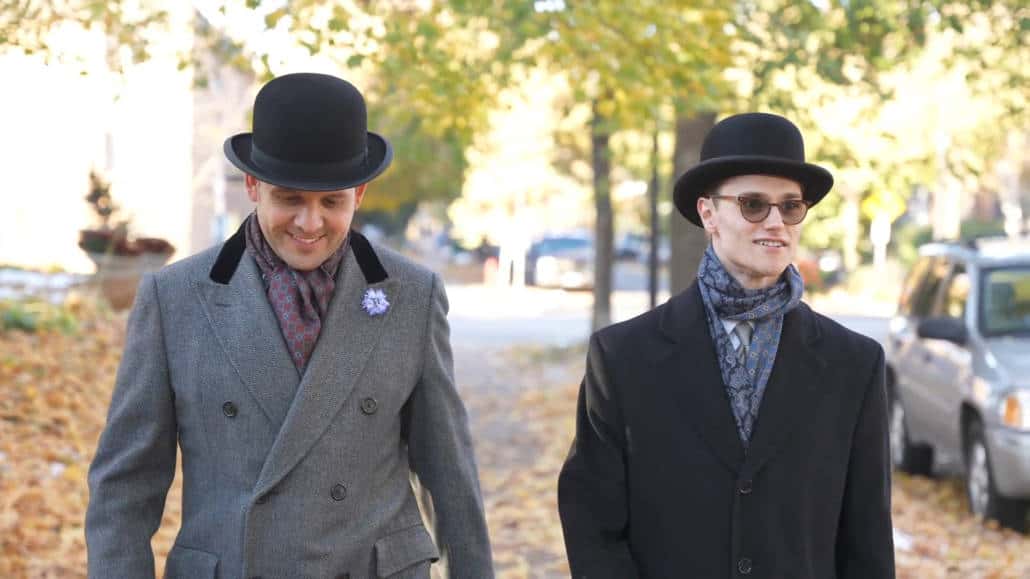

Fort Belvedere
Blue Cornflower Boutonniere Buttonhole Flower Silk Fort Belvedere
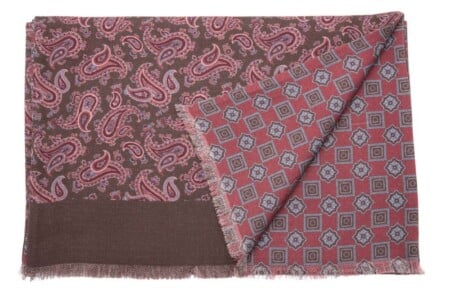
Fort Belvedere
Double Sided Wool Silk Scarf in Brown, Burgundy, Red, Blue Paisley with Geometric Pattern
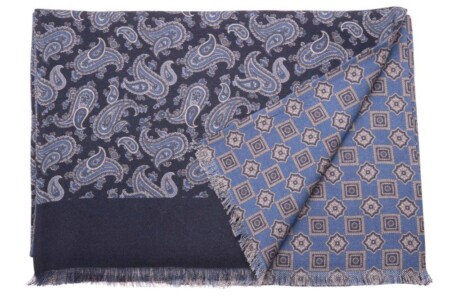
Fort Belvedere
Double Sided Wool Silk Scarf in Navy, Grey, Blue Paisley & Diamond Pattern
Fortunately, though, there are still some social events where hats are required, like at Royal Ascot, for example, or as part of military or other dress uniforms, and even today, you will occasionally see some celebrities sporting hats as part of their overall image.
So, perhaps hats will rise again and become popular at some point in the future. We can't say for certain, but if they do, they will likely become popular again because of fashion rather than function.
If you've read our post on whether or not the suit is dying, you'll remember that we made a similar argument there, and, indeed, the suit is already undergoing this transition. In the meantime, the classic menswear enthusiasts among us will continue to keep the proud tradition of hat-wearing alive.
Outfit Rundown
I'm wearing a light and summery outfit that's topped off by a hat. It's a Panama straw hat in the traditional off-white color.
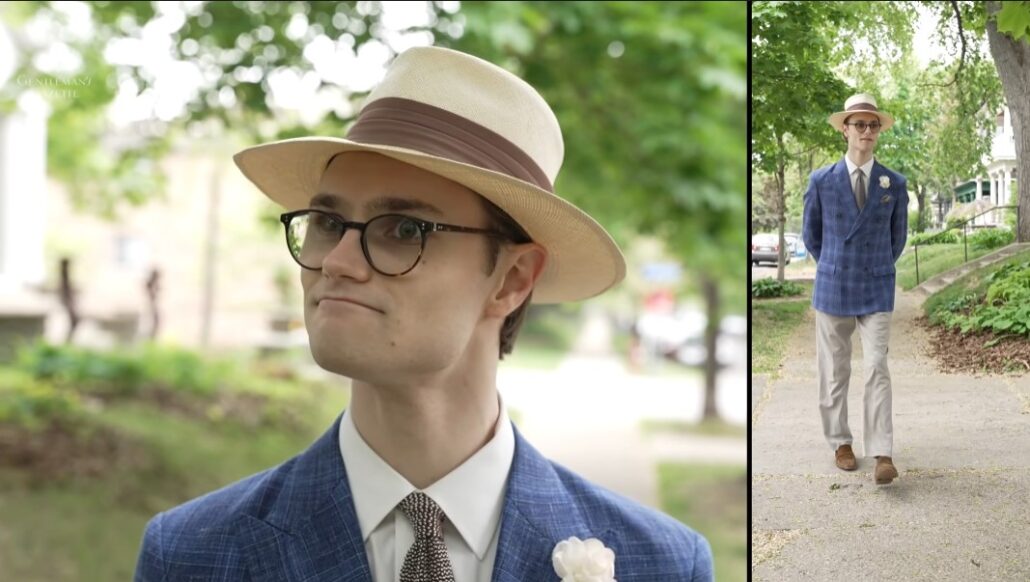
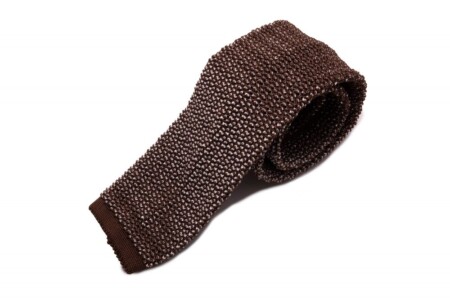
Fort Belvedere
Two-Tone Knit Tie in Brown and Beige Changeant Silk – Fort Belvedere
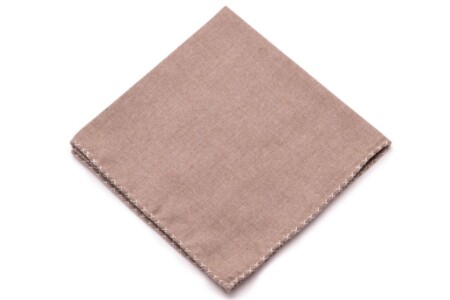
Fort Belvedere
Soft Light Brown Cotton Flannel Pocket Square with handrolled light gray X-stitch edges – Fort Belvedere
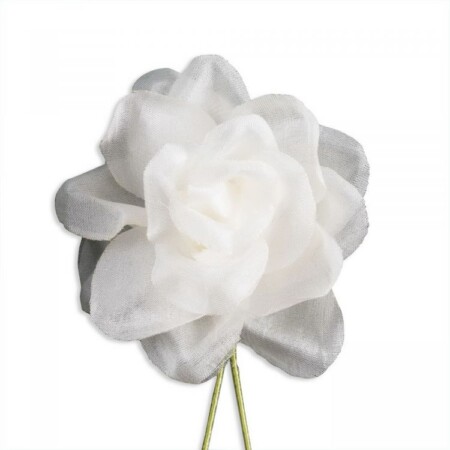
Fort Belvedere
White Spray Rose Boutonniere Buttonhole Flower Fort Belvedere
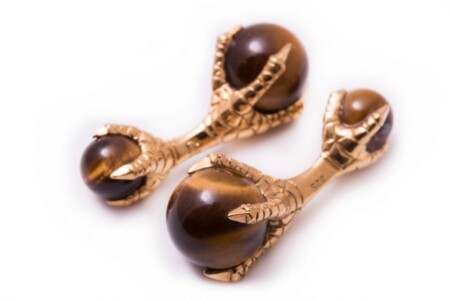
Fort Belvedere
Eagle Claw Cufflinks with Tiger's Eye Balls – 925 Sterling Silver Gold Plated – Fort Belvedere
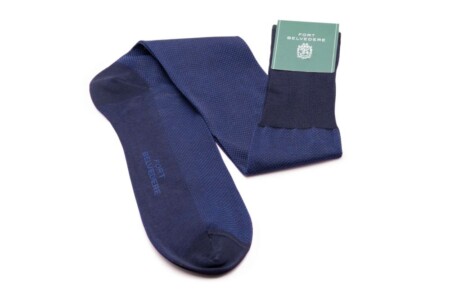
Fort Belvedere
Navy Blue & Royal Blue Two Tone Solid Oxford Socks Fil d'Ecosse Cotton – Fort Belvedere
Although, instead of having the more typically seen black hat band, this one has a medium brown band. It softens the overall look of the hat a bit and also makes it more easily paired with other wardrobe elements as I'm taking advantage of here. Two immediately apparent examples would be my two-tone knit tie in changeant silk of brown and beige and my pocket square in light brown cotton flannel with a hand-rolled x-stitch in light gray.
My ivory spray rose boutonniere provides a bit of off-white color and visual interest, and harmonizes well with my similarly off-white shirt, into the cuffs of which I've got inserted our gold-plated sterling silver eagle claw cufflinks with tiger's eye as the stone for a brown color feel. My blue double-breasted jacket from Hawes & Curtis is relatively lightweight and mostly unlined, and features a subtle check pattern that's good for summer. My plain trousers are in a khaki or stone color.
And my tobacco brown suede loafers from Scarosso keep up the casual feel of the outfit, and also contribute to the brown color tones. Finally, my two-tone socks in light blue and royal blue tie in with the colors in my jacket and make the entire outfit harmonious from top to bottom. And, of course, you can find all of the Fort Belvedere accessories I'm wearing in the Fort Belvedere shop.
Do you believe our case for the decline of hat-wearing? Do you still wear hats today? Let us know in the comments!
Source: https://www.gentlemansgazette.com/men-stop-wearing-hats/
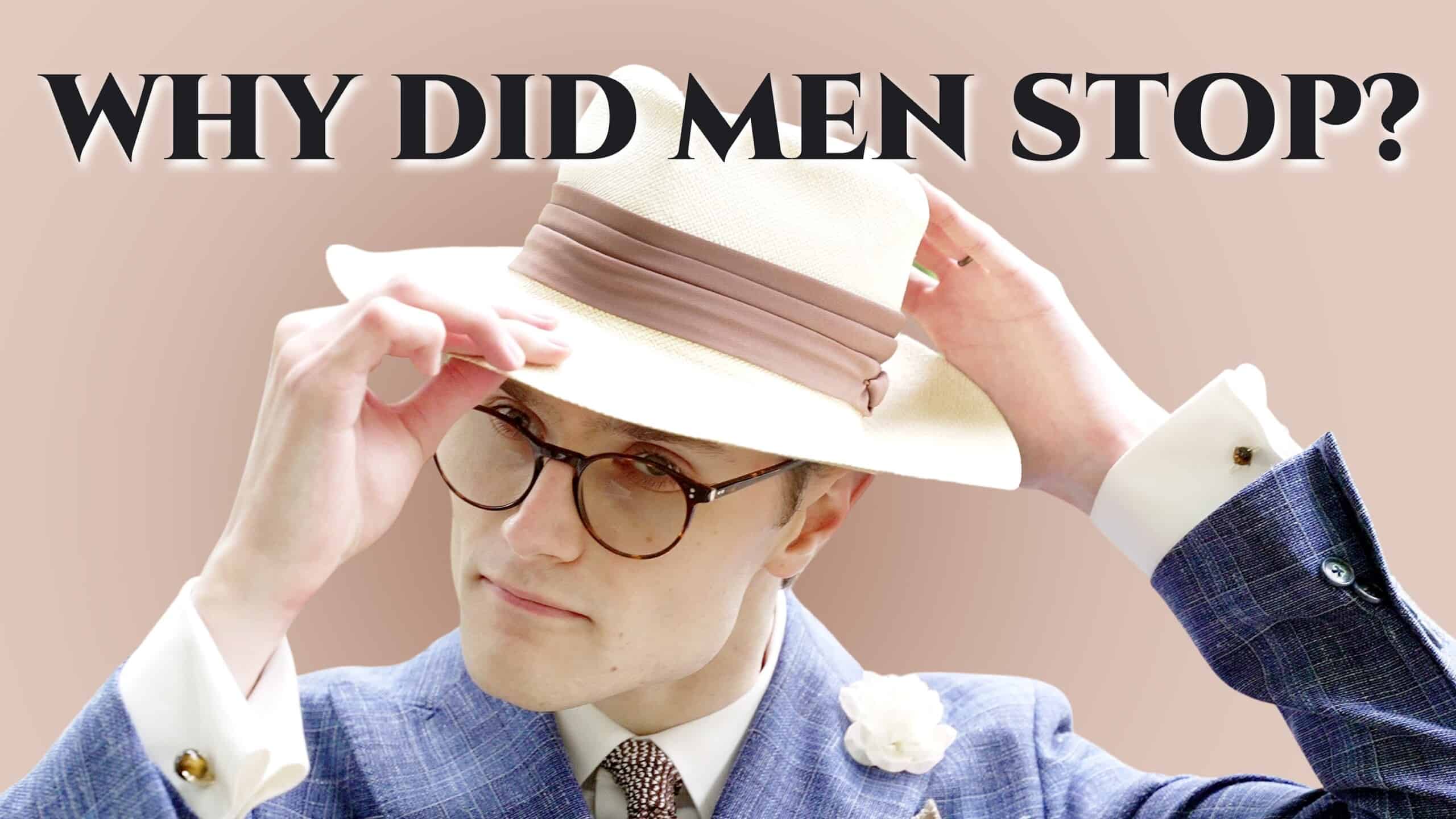
0 Response to "Funny Hats on Guys That Are Wy Too Small"
Post a Comment